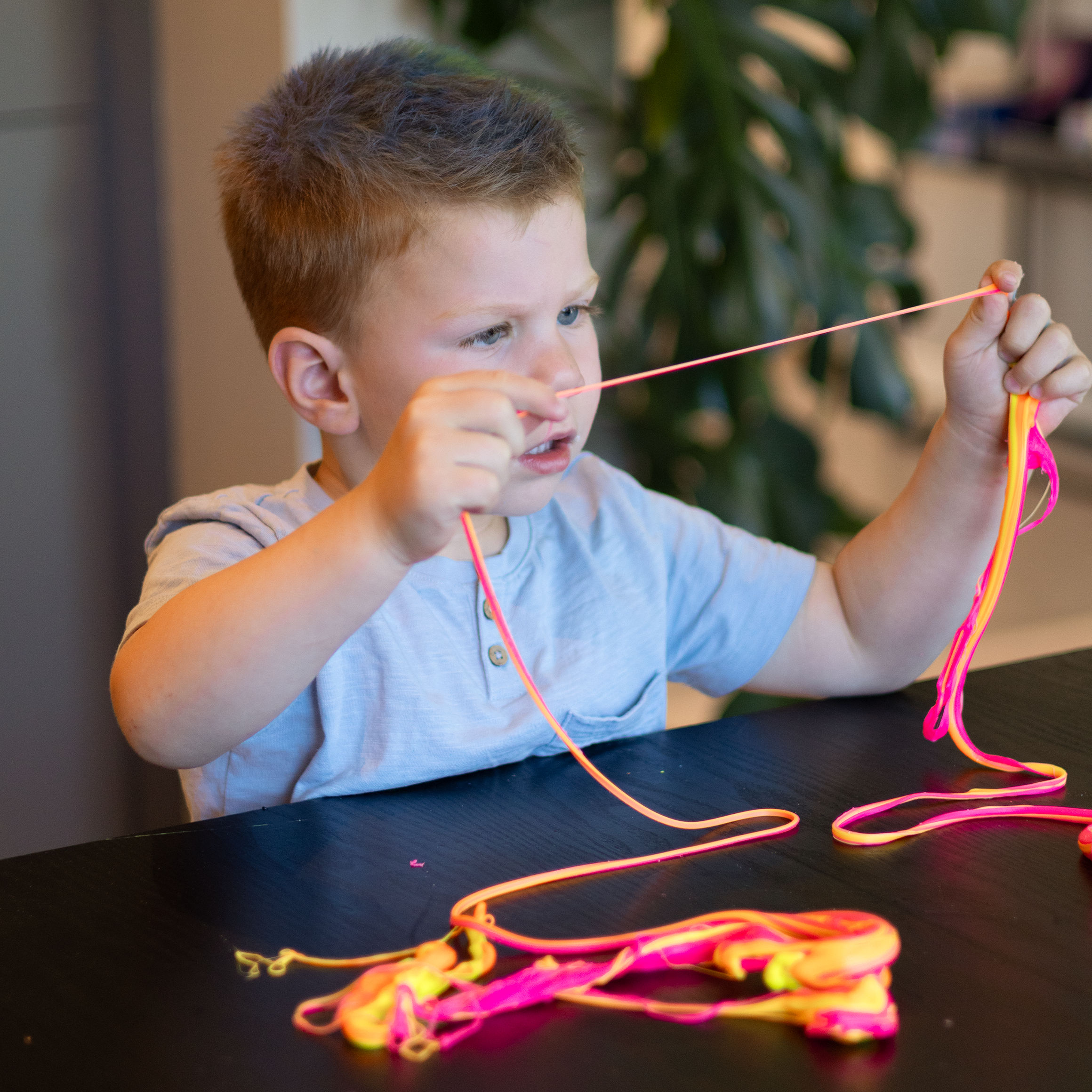Description
Stretch it, squeeze it, mash it, tear it to pieces and bounce it like a ball. This putty comes in three luminescent colours.
Words like pudding, rubber and dough have been used to try to explain the texture, but it is impossible to describe. You have to feel it yourself. The same putty you can stretch to over a meter, you can also break in half, or bounce like a bouncy ball.
Some say it removes stress, others say it makes you creative. We don't care, because most importantly; it's fun!
This type of putty glows in the dark and comes in three vibrant colours: pink, yellow and green.
What is putty, and where does it come from?
During World War II, the United States had poor access to rubber. Many areas with rubber tree plantations in the Pacific had been occupied by Japan. The result is that putty, and many other silicone products, were developed as an alternative during the Second World War.
In 1936, Dr. Earl Warrick began experimenting with "organosilicon" where he combined silicone (think sand, glass, computer cards) with carbon (think coal, oil, you and me). Earl was unable to achieve his goal of creating a substitute for rubber before the war was over, but one of the results of his research was the main ingredient in what we now call putty or glux. Although it did not have any industrial use, it became a material with strange properties and a fun toy.
Does putty dry out?
No! Never. Putty is silicone-based, not clay nor plasticine. It never dries out.
The only reason to keep it in a closed box is to protect it from dirt and dust.
Is putty poisonous?
The putty from VitenWahl is chemically inert, which means that it does not react with other materials, and is completely harmless. The putty does not contain latex or wheat, and is therefore completely safe for those with allergies.
However, we do not recommend eating putty, or putting it in your mouth at all. If you should happen swallow a small piece - fear not, you will be able to play with it again in a couple of days..
How can putty bounce?
The bounce comes from the flexible silicon-oxygen bonds in the material.





